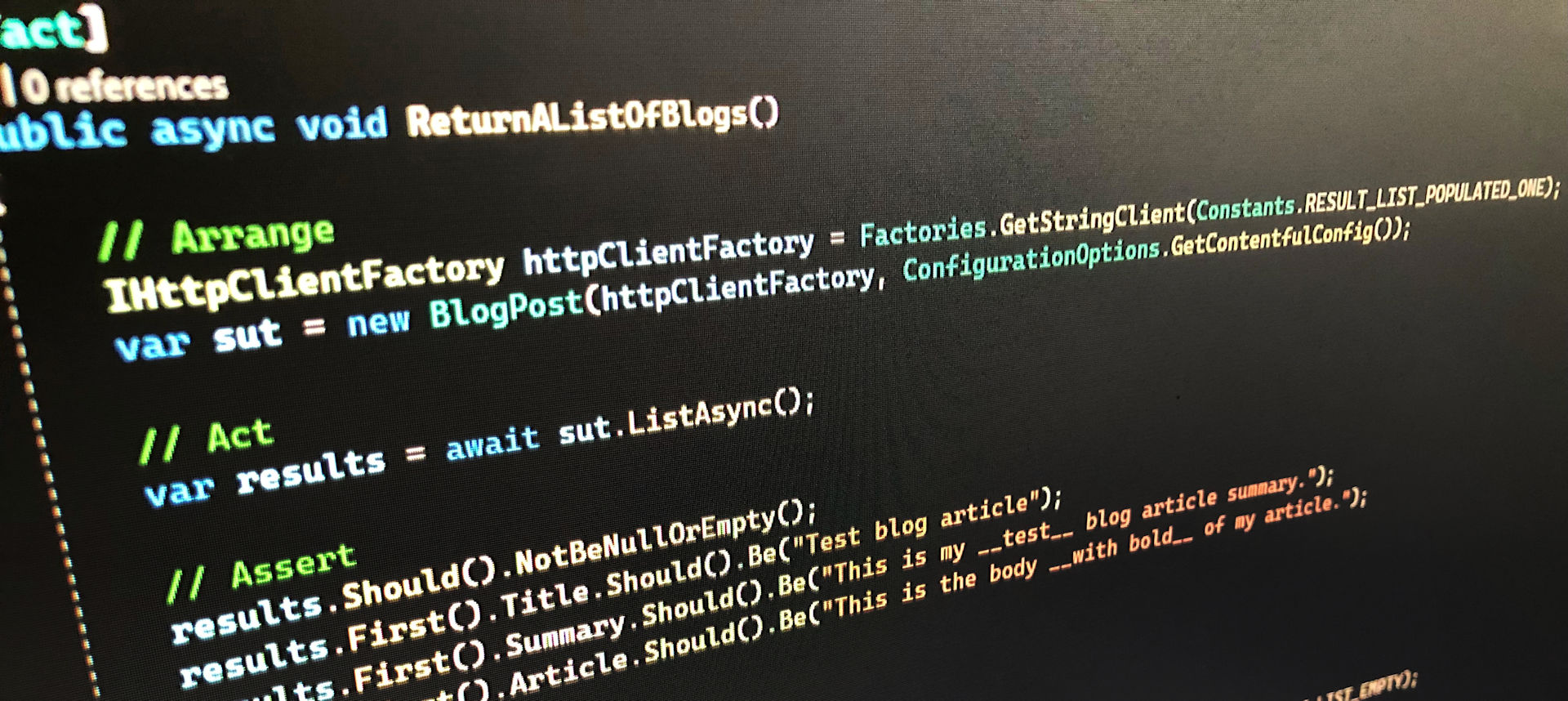
Test Driven Development (TDD) – C# – Finishing the App (part 5 of 5)
This fourth and final article will add some error handling to the blog list retrieval and also populate the BlogPostEntry object with values from the API.
Seventh Test – Handle Errors
This is a relatively simple test but does require an additional option creating in our MockFactories class.
Failing Test
Firstly, let’s create the failing test in Demo.Tdd.Contentful.Tests:
[Fact]
public async void ReturnEmptyListIfTimeoutOccurs()
{
// Arrange
IHttpClientFactory httpClientFactory = MockFactories.GetTimingOutClient();
var sut = new BlogPost(httpClientFactory, Constants.GetContentfulConfig());
// Act
var blogPosts = await sut.ListAsync();
// Assert
blogPosts.Should().NotBeNull();
blogPosts.Should().BeEmpty();
}We will specifically be throwing a TimeoutException but we’ll write the code to catch any exception when we come to implement it.
Making the Test Green
To make the test green, we’ll wrap the API call in a try/catch. We’ll also need to move the declaration of posts to outside the try/catch.
string? posts = null;
try
{
posts = await _httpClient.GetStringAsync($"/spaces/{_config.SpaceId}/environments/{_config.Environment}/entries?access_token={_config.ApiKeys?.PublishedContent}");
}
catch
{
return new List<BlogPostEntry>();
}You will now also find that the UI project will run successfully, even if an error occurs.
Eighth Test – Populate Title, Summary and Article from API
This final test will check the data coming back from the API is populating the BlogPostEntry object within the list of blogs returned.
Failing Test
The test checks that known values (pulled from the constant) are assigned to the properties of the first blog entry in the list.
[Fact]
public async void AListOfBlogsHasPopulatedValues()
{
// Arrange
IHttpClientFactory httpClientFactory = MockFactories.GetStringClient(Constants.RESULT_LIST_POPULATED_TWO);
var sut = new BlogPost(httpClientFactory, Constants.GetContentfulConfig());
// Act
var results = await sut.ListAsync();
// Assert
results.Should().NotBeNullOrEmpty();
results.First().Title.Should().Be("Test blog article");
results.First().Summary.Should().Be("This is my __test__ blog article summary.");
results.First().Article.Should().Be("This is the body __with bold__ of my article.");
}To get the code to compile, add the missing “Article” property to BlogPostEntry:
public string? Article { get; set; }Making the Test Green
To make the test pass, we need to modify the code within the foreach of the ListAsync method as shown below:
var fields = (JsonElement)blogPostEntry["fields"];
blogPosts.Add(new BlogPostEntry()
{
Title = fields.GetProperty("title").GetString() ?? "",
Summary = fields.GetProperty("summary").GetString() ?? "",
Article = fields.GetProperty("article").GetString() ?? ""
});If you run the UI again, making sure the spaceId, environment and API keys are set correctly in appsettings.json and user secrets, then the title and summary will be displayed.
Conclusion
This is obviously not a fully complete application but hopefully these articles have helped illustrate the TDD process, provide a practical demo and potentially some ways to mock or stub items.
Company Reviews